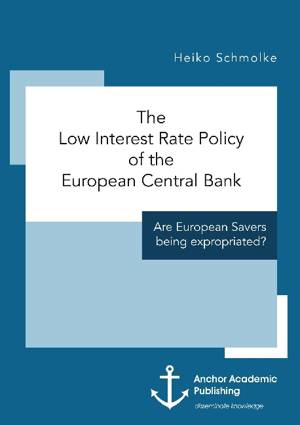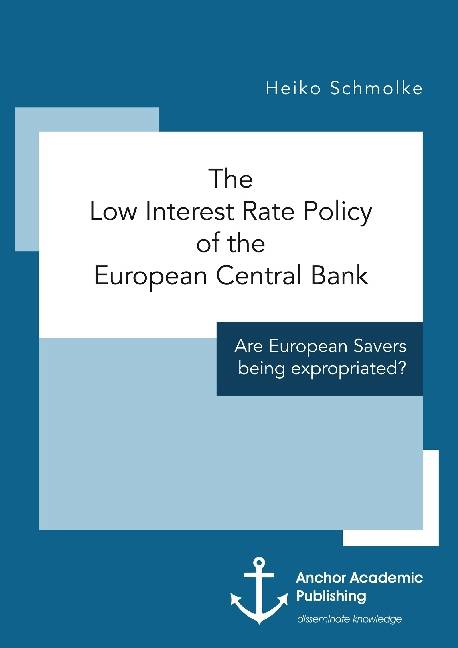
- Afhalen na 1 uur in een winkel met voorraad
- Gratis thuislevering in België vanaf € 30
- Ruim aanbod met 7 miljoen producten
- Afhalen na 1 uur in een winkel met voorraad
- Gratis thuislevering in België vanaf € 30
- Ruim aanbod met 7 miljoen producten
Zoeken
The Low Interest Rate Policy of the European Central Bank. Are European Savers being expropriated?
Heiko Schmolke
Paperback | Engels
€ 39,45
+ 78 punten
Omschrijving
Central banks around the world have lowered their key interest rates to historical lows and implemented large asset purchase programs in the past few years. Within the scientific and, most recently, also increasingly in the political debate, the nominal interest rate is mainly the subject of discussion. The question is often raised whether saving and retirement provision are still worthwhile for private households, especially in Germany. In this context it is often ignored or not considered that the purchasing power of the nominal interest rates fluctuates considerably with the inflation rate. Inflation-adjusted real interest rates are therefore decisive for the actual income from financial assets and crucial for the savings and investment behavior. This study, therefore, shall play ist part to investigate scientifically the influence and correlation of low and negative key interest rates on yield levels of selected asset classes within the sphere of influence of the European Central Bank. In this context, the mainly populist question is also answered whether savers are expropriated slowly.
Specificaties
Betrokkenen
- Auteur(s):
- Uitgeverij:
Inhoud
- Aantal bladzijden:
- 146
- Taal:
- Engels
Eigenschappen
- Productcode (EAN):
- 9783960671190
- Verschijningsdatum:
- 16/03/2017
- Uitvoering:
- Paperback
- Formaat:
- Trade paperback (VS)
- Afmetingen:
- 178 mm x 254 mm
- Gewicht:
- 263 g

Alleen bij Standaard Boekhandel
+ 78 punten op je klantenkaart van Standaard Boekhandel
Beoordelingen
We publiceren alleen reviews die voldoen aan de voorwaarden voor reviews. Bekijk onze voorwaarden voor reviews.











